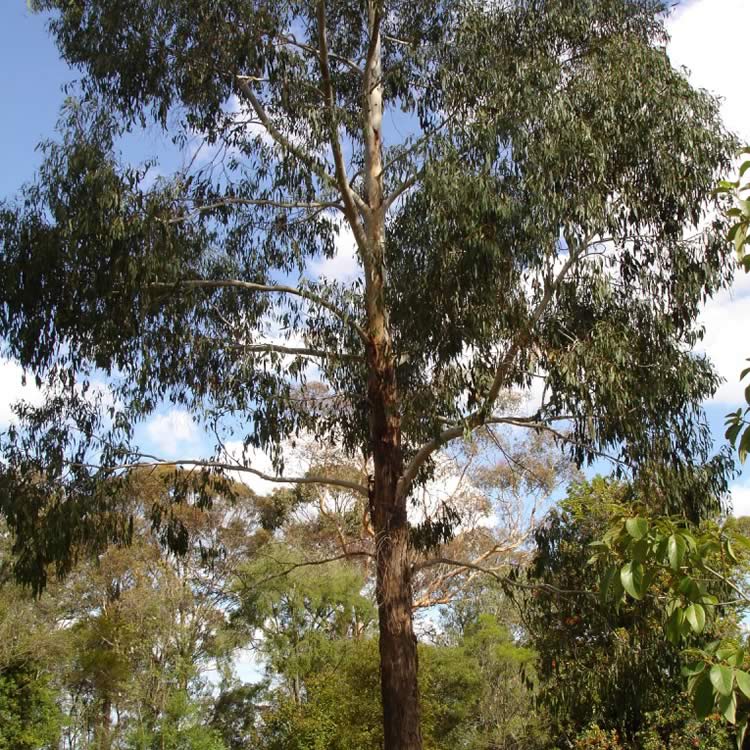Swamp gum

Community type
Habitat type
Tidal wetlands and macrophytes beds
Tasmania has 29 species of eucalypt. Swamp gum gets its name as they generally occur in poorly drained, swampy areas with sandy or clay soils. Swamp gums grow in a variety of terrain, from exposed coastal sites through to mountain foothills. In the tidal wetlands of the Upper Derwent Estuary, swamp gums grow on low elevated banks where their roots are inundated by water.
Usually a medium-sized tree, under the right conditions it can reach up to 30 m in height. The base of the tree is usually covered in rough, dark grey bark extending a short way up the trunk. The rest of the trunk and branches shed long ribbons of bark, leaving a smooth creamy white or pink surface. Many insects and birds live and feed among the bark and branches of swamp gums. They flower from July to October, are an important food source for nectar feeding birds like lorikeets and parrots, and are a vital food plant for the endangered swift parrot.
